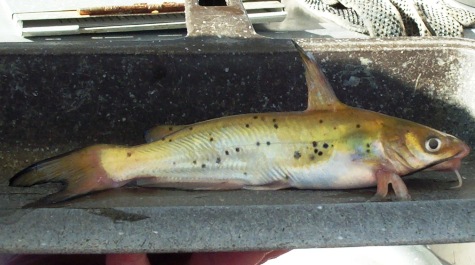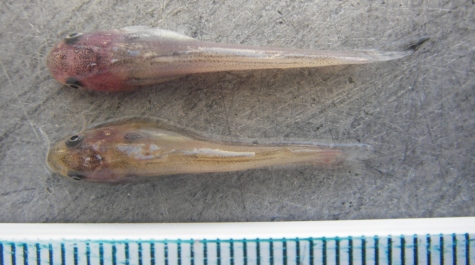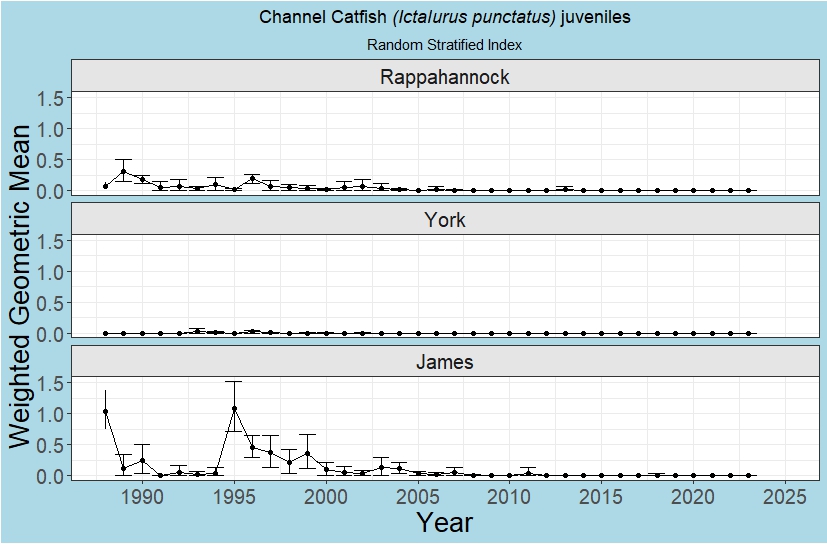Channel Catfish
- This species first recruits to the survey gear in June.
- The Young-of-Year cutoff values are:
- June: 0-50 mm.
- July: 0-80 mm.
- August: 0-105 mm.
- September: 0-120 mm.
- October: 0-130 mm.
- November: 0-130 mm.
- December: 0-130 mm.
- January: 0-130 mm.
- February: 0-130 mm.
- March: 0-130 mm.
- April: 0-140 mm.
- May: 0-150 mm.
- Index months are in bold.
- In 2018, the recruitment window for juvenile and age 1+ Channel Catfish was changed from January to April to the new period that occurs from September to November. All annual indices for Channel Catfish were recalculated to reflect the new recruitment period.
- Because Channel Catfish are restricted in their distribution, an index of abundance is calculated for each tributary. Only stations in the upper portions of the rivers are used.
- The Age 1+ index for this species contains several year classes. It may be possible to split out individual age groups in the future.
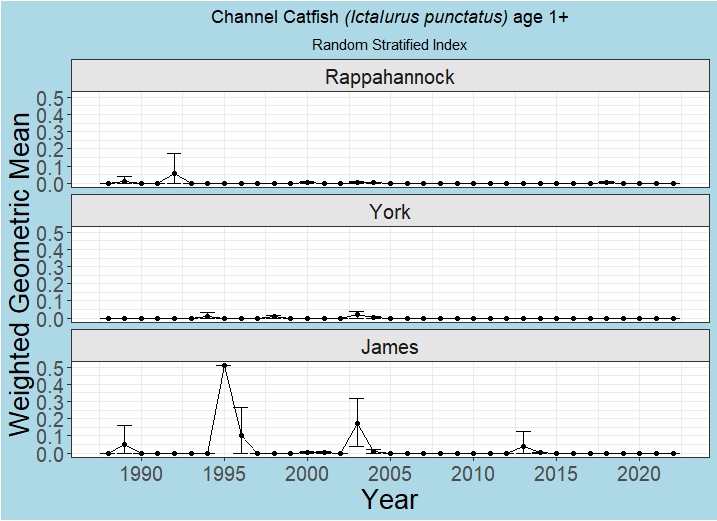
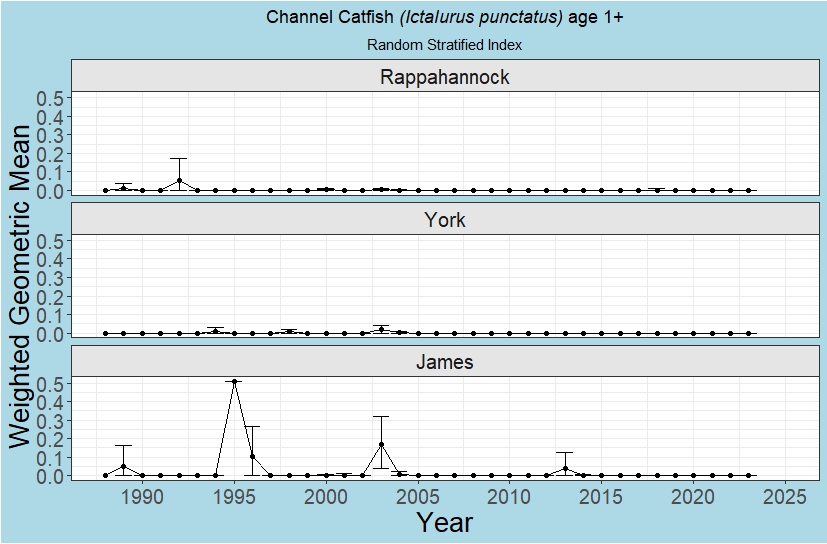
Data collected after the transition to a new vessel and net (June 2015) have been adjusted by a species-specific calibration factor.


